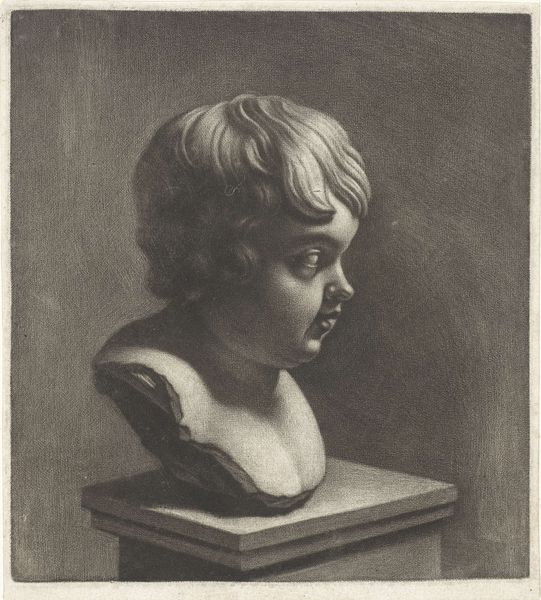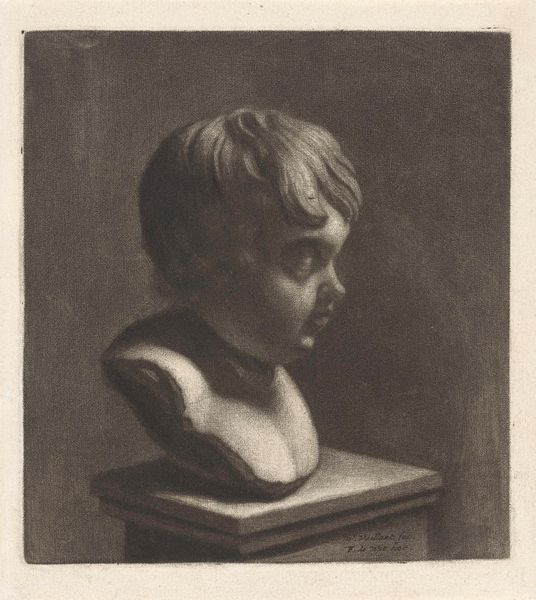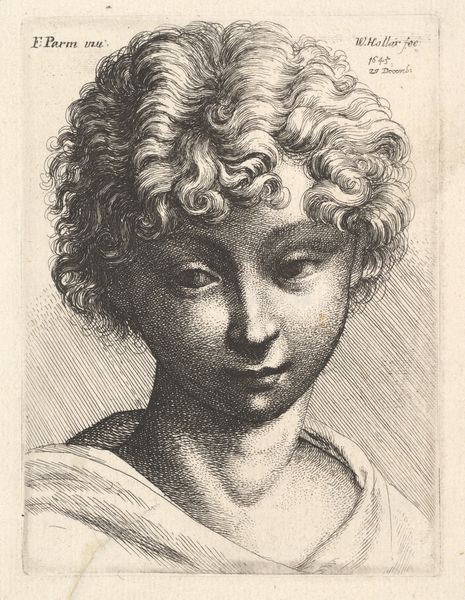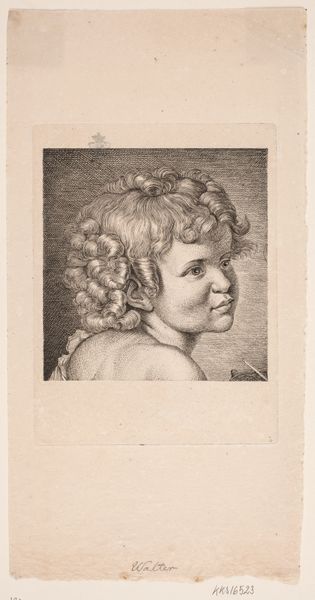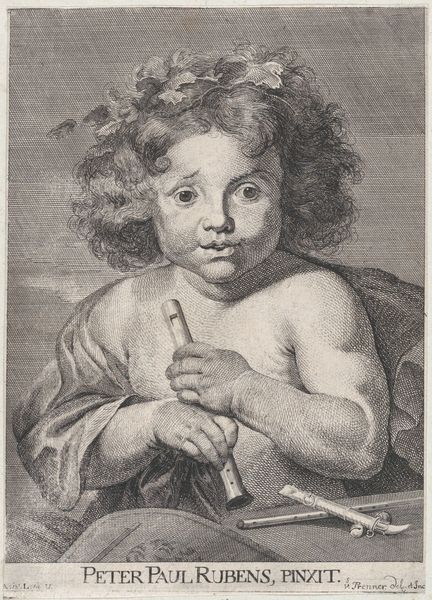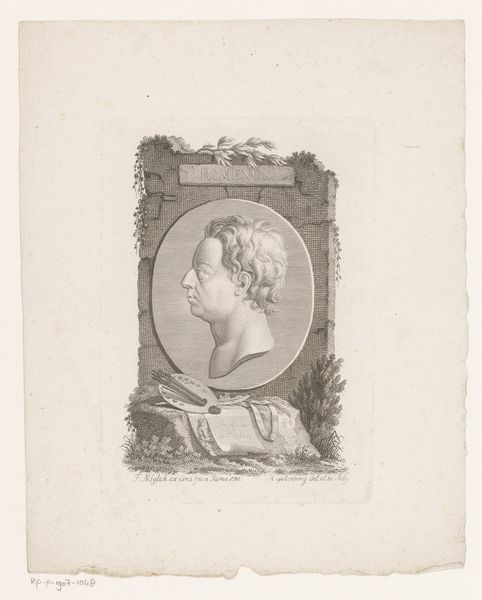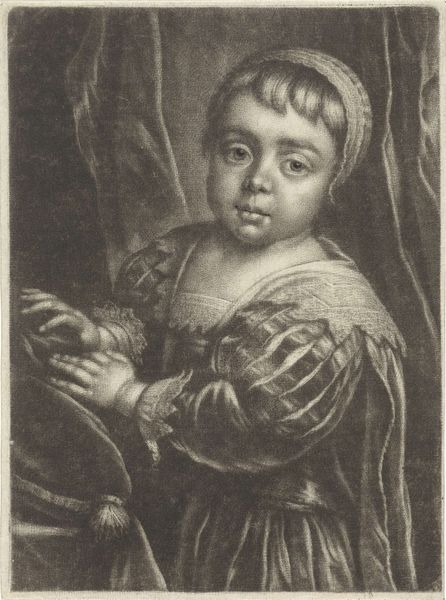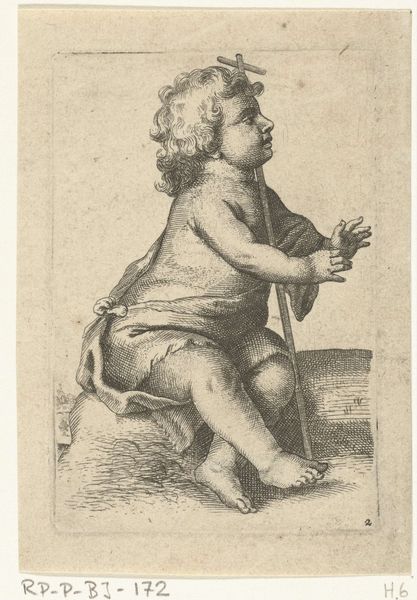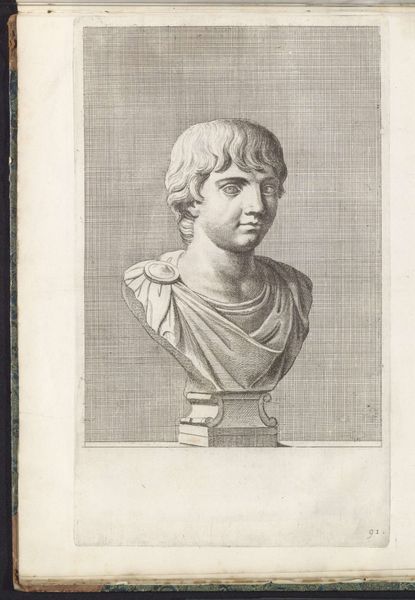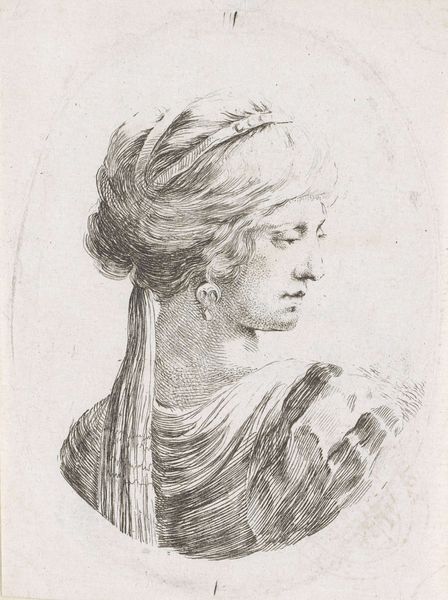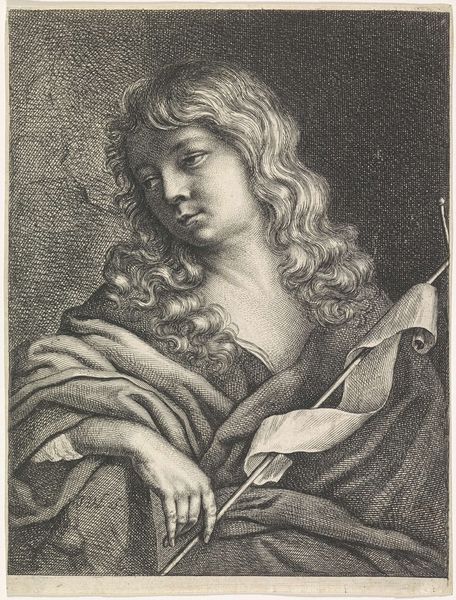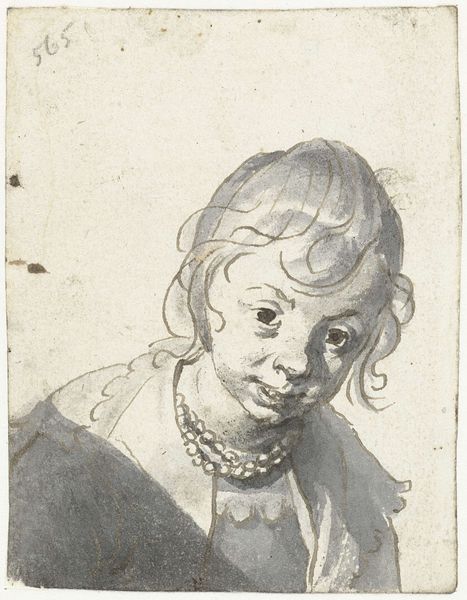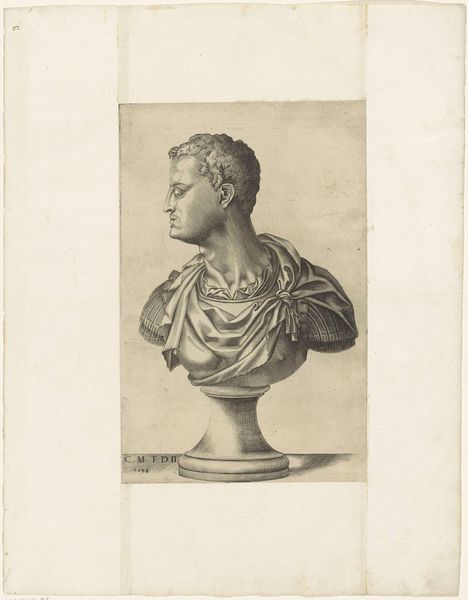
drawing, print, sculpture, woodcut, graphite, charcoal
#
portrait
#
drawing
#
baroque
# print
#
charcoal drawing
#
child
#
sculpture
#
woodcut
#
graphite
#
portrait drawing
#
charcoal
Dimensions: height 148 mm, width 120 mm
Copyright: Rijks Museum: Open Domain
Curator: The stark contrast immediately pulls me in—a monochrome world for a child's solemn face. What do you make of its aesthetic impact? Editor: It is a little melancholy. But the smoothness of the image almost suggests marble. There's an innocence but also the weight of classical portraiture behind it, isn’t there? It calls to mind themes of idealized youth, of cherubs and antiquity. Curator: Exactly! The artwork we're looking at is "Bust of a Child, facing Left" by Wallerant Vaillant, dating back to between 1658 and 1677. Consider how children were often depicted then—often used symbolically, yes, but here? We're offered something unsettlingly individualized. It’s fascinating given Vaillant’s context. Editor: Unsettling is a good word. In terms of symbolism, the bust is severed; where the form terminates implies loss, or perhaps fragmentation, as if the sitter cannot truly represent him- or herself to us. Then consider how the medium is itself is reproducible; it is a drawing, yes, but its visual quality evokes printed images, such as charcoal drawings, woodcuts, or graphite. This affects our reading, as the identity seems both unique and somewhat repeatable or generic. Curator: A brilliant point about reproducibility! It pushes us to reflect upon identity formation during childhood, where individuals are perceived and perhaps replicated. Think about how class, gender, familial expectations…all converge upon these young bodies. Editor: The light seems concentrated around the child's forehead. Perhaps it emphasizes their nascent intellect, suggesting all their potential, and even vulnerability, depending on how society will guide them, for good or for ill. Curator: Such powerful resonances. So while Vaillant might have aimed for a simple portrait, he inadvertently tapped into something far richer, layered with social meaning. It is now housed right here in the Rijksmuseum. Editor: Yes, a conversation piece, one where you are left wondering if this child experienced a privileged upbringing, despite the hint of sadness, and the formal artifice surrounding his presentation as a "bust." Curator: Agreed; seeing art as a lens into understanding power dynamics certainly gives us tools to keep critically reflecting. Editor: Indeed! Thank you, these nuances regarding form and context grant new layers for a contemporary audience.
Comments
No comments
Be the first to comment and join the conversation on the ultimate creative platform.
